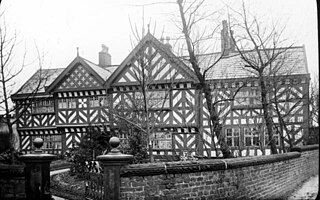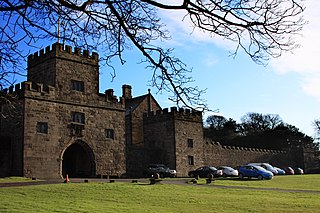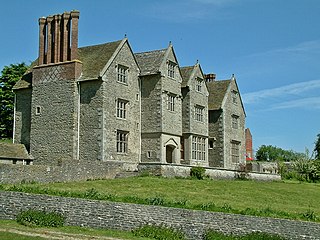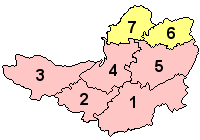| Gurney Manor | |
|---|---|
 | |
| General information | |
| Town or city | Cannington, Somerset |
| Country | England |
| Coordinates | 51°09′00″N3°03′21″W / 51.1499°N 3.0559°W Coordinates: 51°09′00″N3°03′21″W / 51.1499°N 3.0559°W |
| Completed | 13th century |
Gurney Manor in Cannington, Somerset, England is a 13th-century manor house with an attached chapel wing, is now supported by the Landmark Trust and is available as holiday accommodation. [1] It has been designated as a Grade I listed building [2]

Cannington is a village and civil parish 3 miles (5 km) north-west of Bridgwater in the Sedgemoor district of Somerset, England. It lies on the west bank of the River Parret, and contains the hamlet of Edstock.

Somerset is a county in South West England which borders Gloucestershire and Bristol to the north, Wiltshire to the east, Dorset to the south-east and Devon to the south-west. It is bounded to the north and west by the Severn Estuary and the Bristol Channel, its coastline facing southeastern Wales. Its traditional border with Gloucestershire is the River Avon. Somerset's county town is Taunton.

A manor house was historically the main residence of the lord of the manor. The house formed the administrative centre of a manor in the European feudal system; within its great hall were held the lord's manorial courts, communal meals with manorial tenants and great banquets. The term is today loosely applied to various country houses, frequently dating from the late medieval era, which formerly housed the gentry.
The first building on the site was an open hall house erected before 1350. It was rebuilt around 1400 with various additions during the 15th century. William Dodisham added the south wing, porch and kitchen and put in new windows. In 1480 he left it to his niece who married Walter Michael a local landowner, whose family owned the manor until 1616. It then became a farmhouse until the early 20th century. In World War II the house was divided into flats by a Mr Harris, whose descendants sold it to the Landmark Trust in the 1980s. [3] The interior includes the remnants of a 17th-century strapwork plaster ceiling. [4]

World War II, also known as the Second World War, was a global war that lasted from 1939 to 1945. The vast majority of the world's countries—including all the great powers—eventually formed two opposing military alliances: the Allies and the Axis. A state of total war emerged, directly involving more than 100 million people from over 30 countries. The major participants threw their entire economic, industrial, and scientific capabilities behind the war effort, blurring the distinction between civilian and military resources. World War II was the deadliest conflict in human history, marked by 50 to 85 million fatalities, most of whom were civilians in the Soviet Union and China. It included massacres, the genocide of the Holocaust, strategic bombing, premeditated death from starvation and disease, and the only use of nuclear weapons in war.
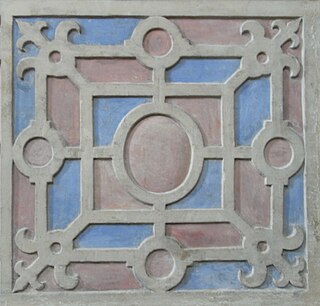
In the history of art and design, strapwork is the use of stylised representations in ornament of ribbon-like forms. These may loosely imitate leather straps, parchment or metal cut into elaborate shapes, with piercings, and often interwoven in a geometric pattern. In early examples there may or may not be three-dimensionality, either actual in curling relief ends of the elements, or just represented in two dimensions. As the style continued, these curling elements became more prominent, often turning into scrollwork, where the ends curl into spirals or scrolls. By the Baroque scrollwork was a common element in ornament, often partly submerged by other rich ornament.
Restoration work in the late 20th century included the construction of new oak roof trusses made in a traditional fashion with an adze. [5]

An adze is a cutting tool similar to an axe but with the cutting edge perpendicular to the handle rather than parallel. They have been used since the stone age. Adzes are used for smoothing or carving wood in hand woodworking. Two basic forms of an adze are the hand adze—a short handled tool swung with one hand—and the foot adze—a long handled tool capable of powerful swings using both hands, the cutting edge usually striking at foot or shin level. A similar, but blunt, tool used for digging in hard ground is called a mattock.





